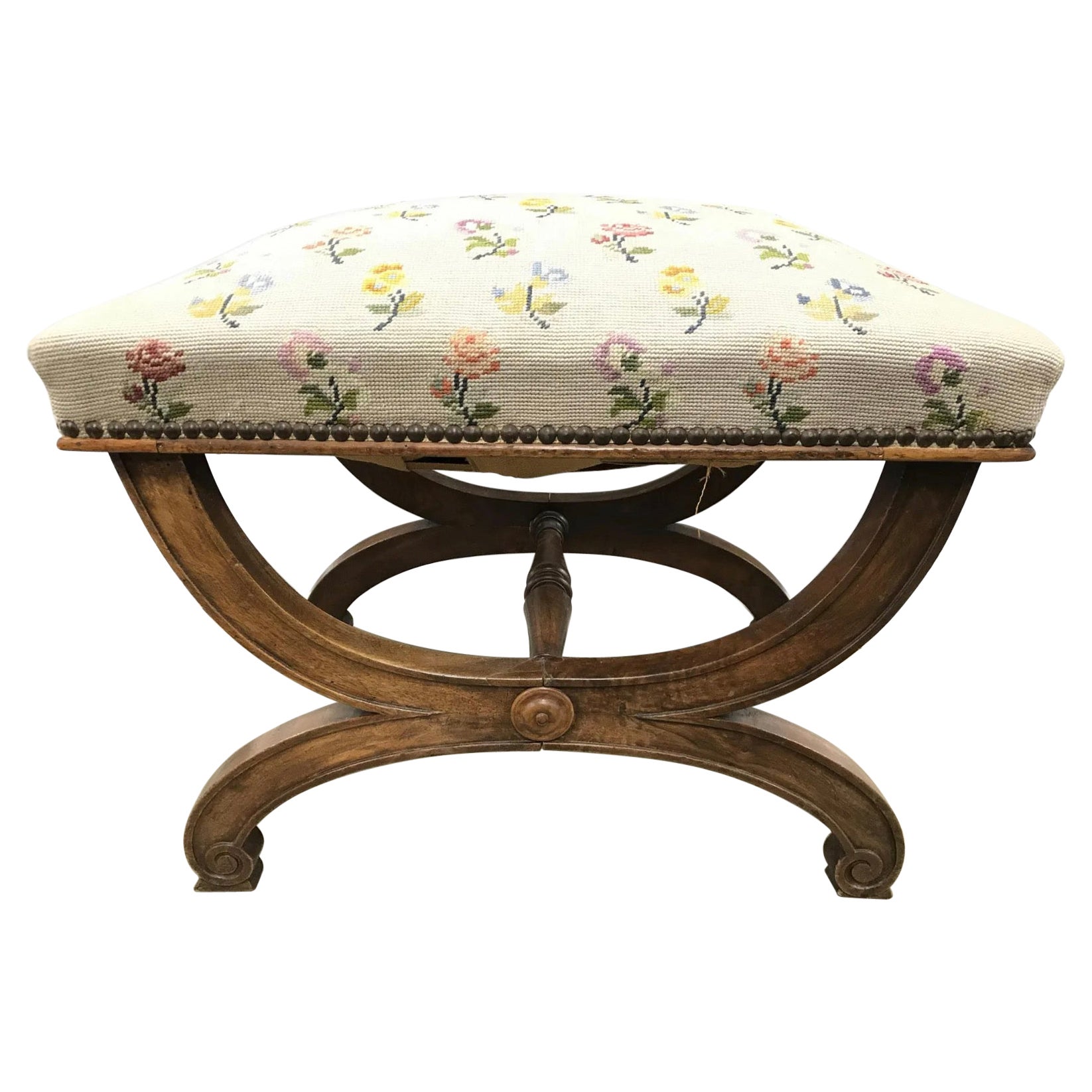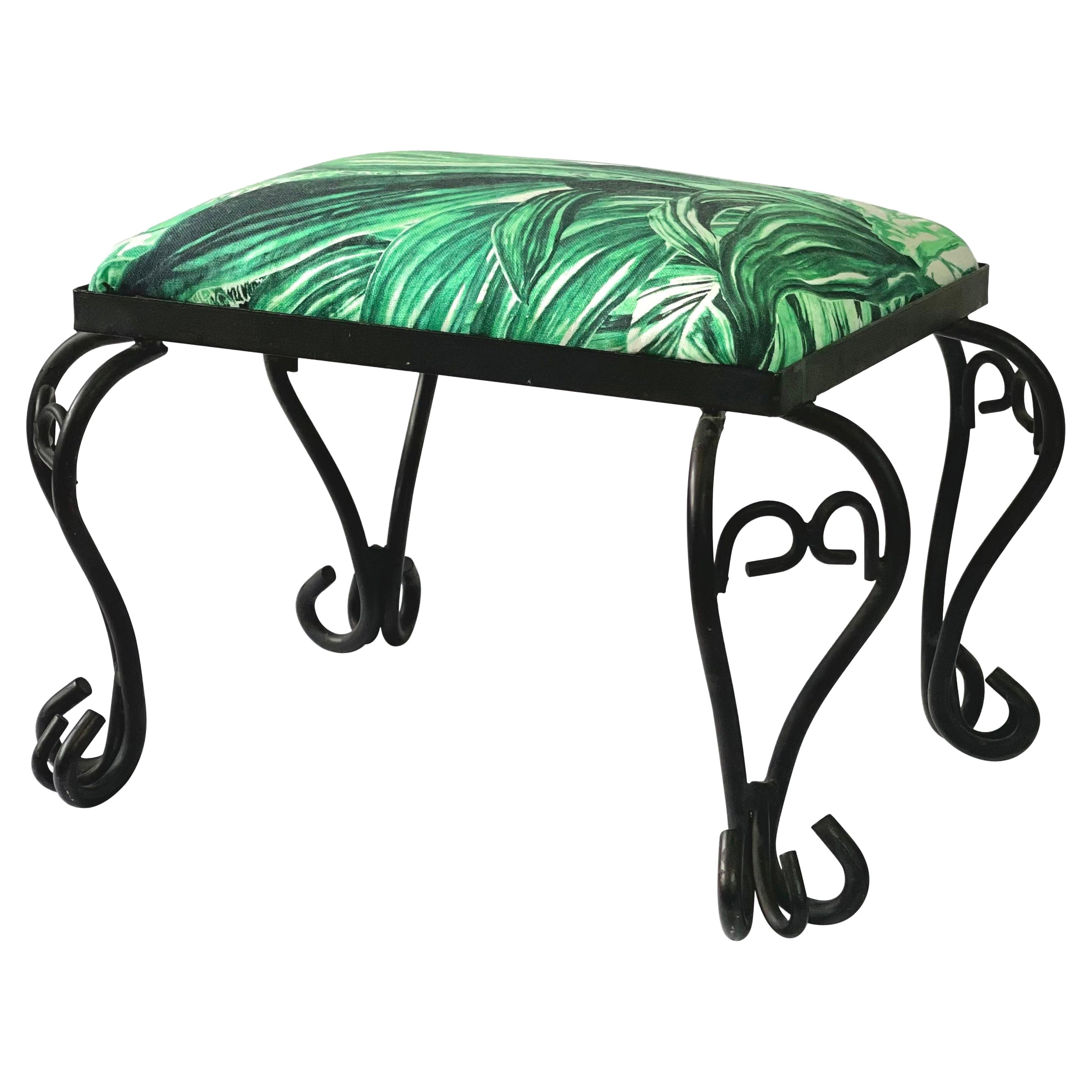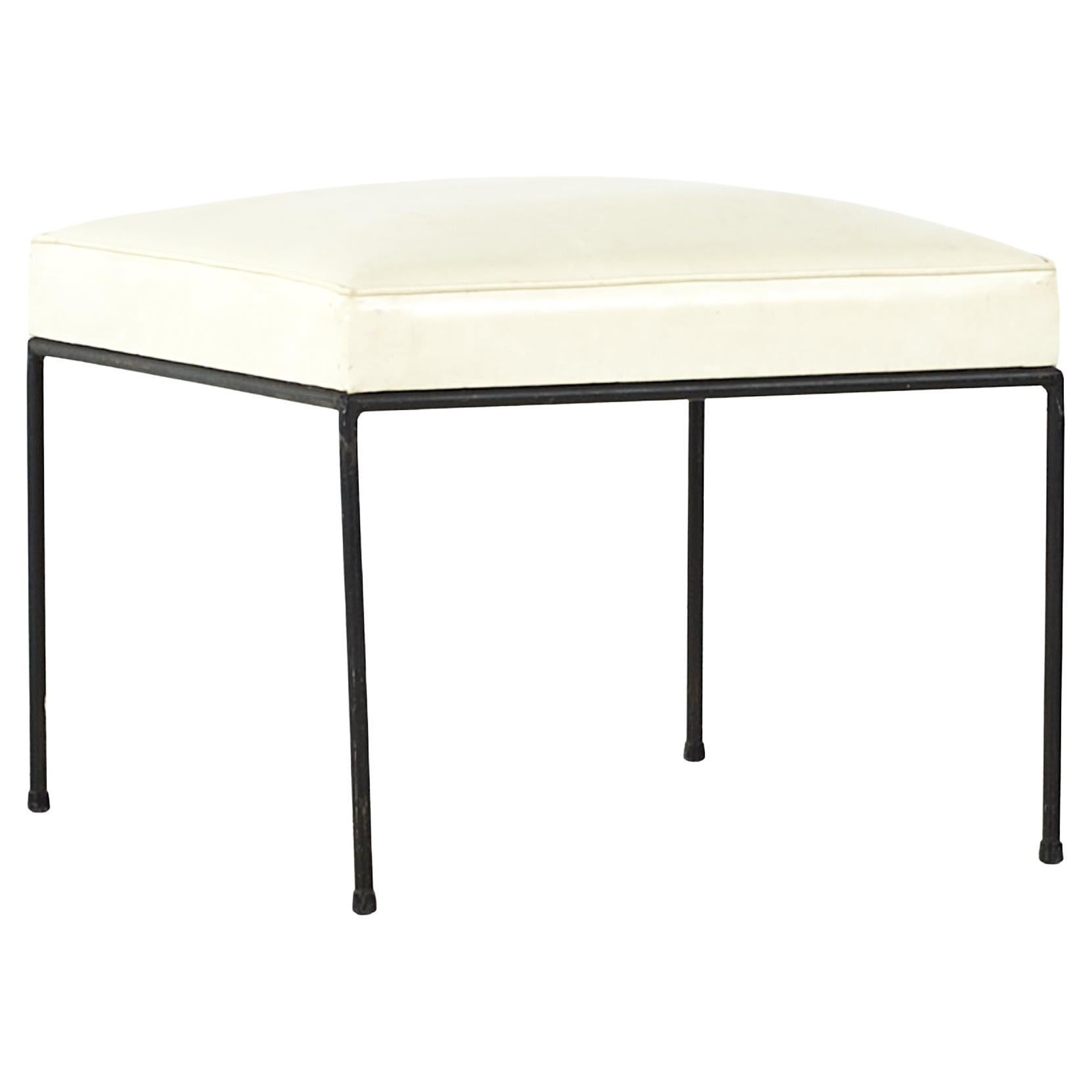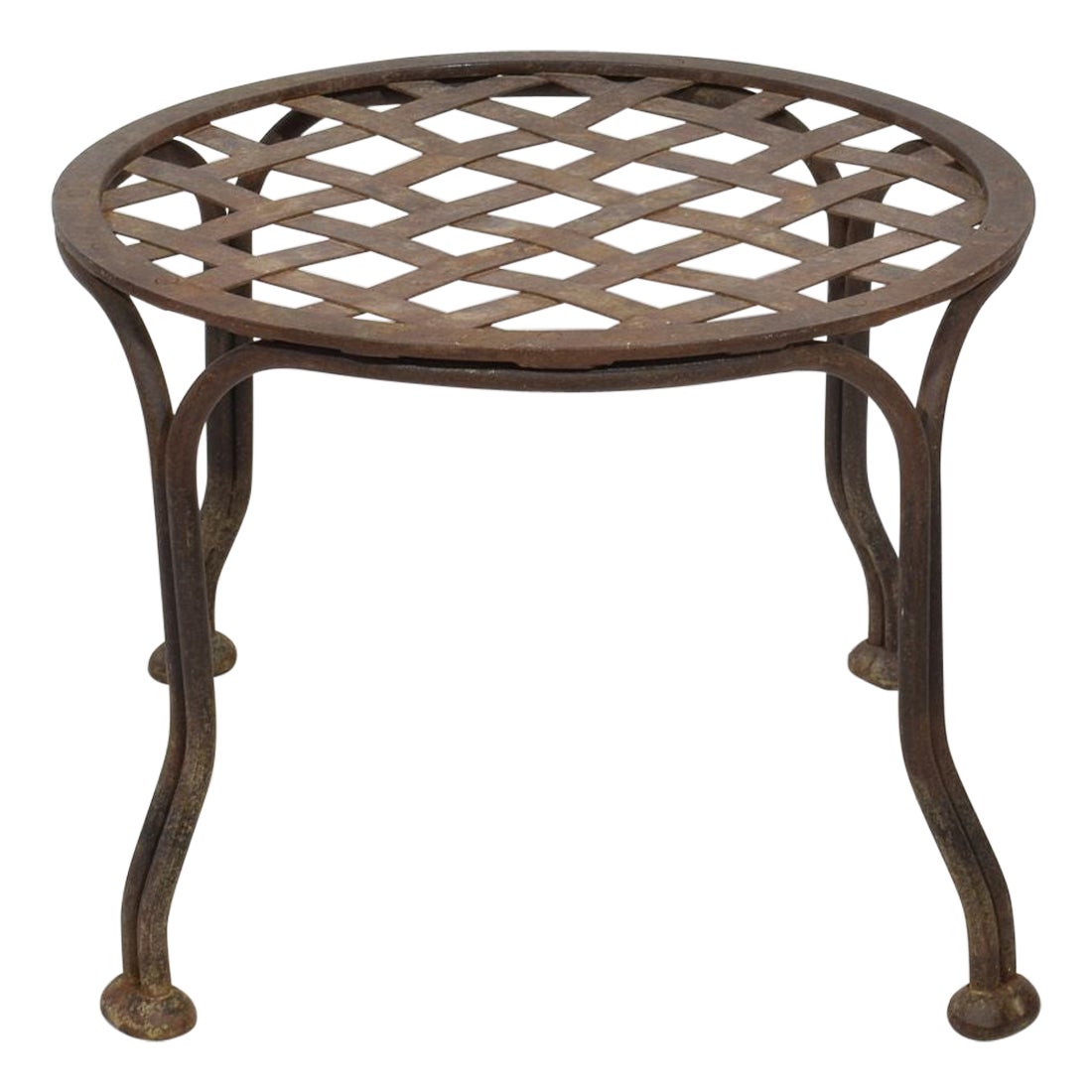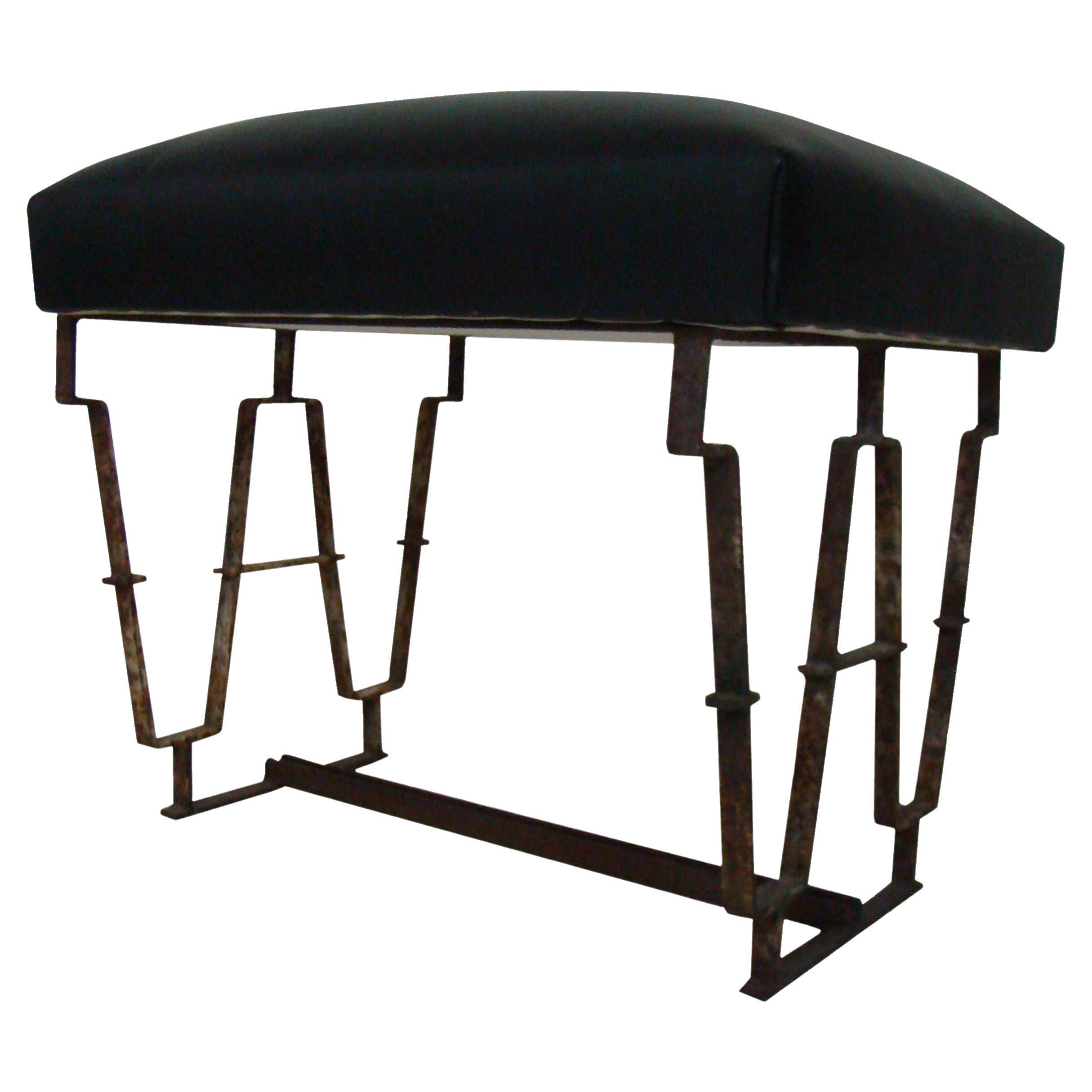Items Similar to French Neo-Classical Black Iron X-Stool
Want more images or videos?
Request additional images or videos from the seller
1 of 14
French Neo-Classical Black Iron X-Stool
About the Item
Elegant French 1950s Neo-Classical enameled iron x-stool with nickel accents.
- Similar to:Maison Jansen (Designer)
- Dimensions:Height: 16.54 in (42 cm)Width: 20.48 in (52 cm)Depth: 16.15 in (41 cm)
- Style:Mid-Century Modern (Of the Period)
- Materials and Techniques:Metal,Enameled
- Place of Origin:
- Period:
- Date of Manufacture:1950s
- Condition:Wear consistent with age and use. Minor losses. Condition: Good with some minor chipping to enamel. Newly upholstered cushion.
- Seller Location:London, GB
- Reference Number:1stDibs: LU2102314833562
About the Seller
4.9
Platinum Seller
These expertly vetted sellers are 1stDibs' most experienced sellers and are rated highest by our customers.
Established in 2011
1stDibs seller since 2016
567 sales on 1stDibs
Typical response time: <1 hour
Associations
LAPADA - The Association of Arts & Antiques DealersInternational Confederation of Art and Antique Dealers' Associations
- ShippingRetrieving quote...Ships From: London, United Kingdom
- Return PolicyA return for this item may be initiated within 7 days of delivery.
More From This SellerView All
- 1950s French Brass and Wrought Iron Torchière Wall SconceLocated in London, GBWith three tubed brass torches, held in place by the decoratively ribboned arms of its hand-forged wrought iron fixture, this torchière wall sconce is a dramatic piece of French 1950...Category
Vintage 1950s French Mid-Century Modern Wall Lights and Sconces
MaterialsBrass, Wrought Iron
- French Art Deco 1940s Wrought Iron Coffee TableLocated in London, GBAn elegant French Art Deco 1940s wrought iron coffee table. Understated in it simplicity the forging of this piece has been executed with great precision the interior of each of the...Category
Vintage 1940s French Art Deco Coffee and Cocktail Tables
MaterialsWrought Iron
- Early 1920s French Faux Bamboo Wrought Iron Garden BenchLocated in London, GBA rare 1920s French faux bamboo garden bench crafted in wrought iron with latticework metal seat. A very beautiful bench.Category
Vintage 1920s French Art Deco Patio and Garden Furniture
MaterialsWrought Iron
- Set of Eight 1940s French Dining Chairs by Maison JansenBy Maison JansenLocated in London, GBA set of eight 1940s limed oak dining chairs by Maison Jansen with high straight backs, shaped wonderfully at the top with the flourish of a double curved arch. The lower frame of ea...Category
Vintage 1940s French Dining Room Chairs
MaterialsUpholstery, Oak
- The New Moderns: From Late to Neo-Modernism - Charles Jencks - Academy, 1990By Charles JencksLocated in London, GBPublished by Academy Editions, 1990. Text by Charles Jencks. A comprehensive analysis from one of the late 20th Century's great architects, Jencks explores the question: 'why has New Modern architecture emerged?' Having continuously discovered and conceptually formed new trends in architecture, here Jencks adds to his former definitions, Post- and Late-Modernism, through a comprehensive critical and amusing synthesis of major architects of the 20th century, including Frank Gehry, Rem Koolhaas, Norman Foster, Richard Rogers, Ricardo Bofill...Category
1990s British Modern Books
MaterialsPaper
- A Pair oWrought-Iron Pedestals by Edgar BrandtBy Edgar BrandtLocated in London, GBA pair of 1920s French pedestals in wrought iron. A square, stepped base on each supports a central column, decorated with strips of iron worked with chiselled, horizontal lines. An...Category
Vintage 1920s French Art Deco Pedestals
MaterialsWrought Iron
You May Also Like
- Vintage Neo-classical Style Needlepoint Upholstered Curule BenchLocated in Sheffield, MAVintage neoclassical style curule bench covered in multi toned floral needlepoint upholstery and nailheads. Bench, needlepoint bench, ottoman, footstool, floral bench...Category
20th Century Classical Roman Stools
MaterialsUpholstery, Walnut
- Art Deco Stool, Material Iron, Country France, 1930Located in Ciudad Autónoma Buenos Aires, CStools Art Deco. Material: iron You want to live in the golden years, this is the stool that your project needs. We have specialized in the sale of Art Deco and Art Nouveau styles since 1982.If you have any questions we are at your disposal. Pushing the button that reads 'View All From Seller'. And you can see more objects to the style for sale. Why are there so many antiques in Argentina? In the 1880 – 1940 there was a grate wave of immigration encouraged by the periods of war that were taking place. 1st World War took place between 1914 and 1918 2nd World War took place between 1939 and 1945 The immigrants options were New York or Buenos Aires. Tickets were cheap and in Buenos Aires they were welcomed with open arms, as it was a country where everything was still to be done. Argentina was the country of new opportunities, labour was needed and religious freedom was assured, in many cases the of the family travel first until they were settled and then the rest of the family members join them. In the immigrant museum “Ellis Island Immigrant Building” in New York you can se the promotional posters of the boats that would take them to a new life. Between the years 1895 and 1896, Argentina had the highest DGP (gross domestic product) per capita in the world according to the Maddison Historical Statistics index, this situation arose due to the large amount of food being exported to European countries, which were at war. The Argentinean ships left the port of Buenos Aires with food, but they returned with furniture, clothes and construction elements, (it´s common to see this the old buildings of the historic neighbourhood of San Telmo, the beams with the inscription “Made in England)”, as well as many markets that were built in Buenos Aires, such us the San Telmo Market, whose structure was brought by ship and afterwards assembled in 900 Defensa Street. With the great influence of European immigrants living in the country, the children of the upper classes travelled to study in France, resulting in the inauguration of “La Maison Argentinienne”, on 27th of June 1928, in the international city of Paris, which hosted many Argentinians that were studying in Frace. It´s the fourth house to be built after France, Canada and Belgium, being the first Spanish-speaking one. Still in place today (17 Bd Jourdan, 75014, Paris, France). Many of the children of these wealthy families who attended international art exhibitions, museums and art courses abroad, took a keen interest in the European style. This is why Buenos Aires was at the time referred as “The Paris of South America”. Between the years 1890 and 1920 more than a hundred Palaces were built on Alvear Avenue the most exclusive avenue in Buenos Aires. Today some of these palaces have been transformed into museums, hotels and embassies. In the year 1936, the Kavanagh building was inaugurated, it was the tallest reinforced concrete building in South America. During 1994 the American Society of Civil Engineers distinguished it as an “international engineering milestone”, and it´s now considered a World Heritage of Modern Architecture. At the time was common to hire foreign architects such as Le Corbusier, who visited Buenos Aires/Argentina in 1929 and in 1948 he drew up the blueprints for a house built in La Plata City (which was declared a World Heritage Site). In 1947, the Hungarian architect Marcelo Breuer designed “Parador Ariston” in the seaside city of Mar del Plata. After an Argentinean student at Harvard University convinced him to come to Argentina. He worked on an urban development project in the Casa Amarilla, area of La Boca. The Ukrainian architect, Vladimiro Acosta, arrives in Argentina in 1928 and worked as an architect until que moved to Brazil. Antonio Bonet, a Spanish architect who worked with Le Corbusier in Paris, arrives in Argentina in 1937, where he carried out several architectural works and in 1938 designs the well-known BFK chair. Andres Kálnay, of Hungarian origin, made around 120 architectural masterpieces, among which the former Munich brewery stands out, he even made the furniture’s design. The German architect, Walter Gropius, director of the Bauhaus, lived in Argentina, where he wrote articles for “Sur” magazine and founded in Buenos Aires, an architectural firm with Franz Möller, who was also an architect, where he built two houses. At the same time several famous designers decided to immigrate to Argentina, among them we can find the well-known French designer, Jean-Michel Frank, who arrived in the country in 1940 and also worked for the Rockefeller family. Special pieces were made, which were sold exclusively in the country, such as the well-known German company “WMF”, who sold their products by catalogue, which were chosen by the ladies of high society in the list of wedding gifts, as well as the pieces designed by Christofle. The Swiss sculptor Alberto Giacometti, made special pieces for Argentinean mansions. In 1904 the first Jansen branch outside Paris was established in Buenos Aires, as the Argentinean clientele demanded a large amount of furniture, from the end of the 19th century to the mid-20th century. In 1970, the brand Rigolleau Argentina made pieces authorised by Lalique. The brands Maple and Thompson also set up shop in the country. The French plastic artist, Marcel Duchamp moved to Argentina in 1918-1919. Glass signed Gallé, Charder, Leverre, Schneider, Muller and other French firms. They were bought in flower shops and were given to ladies with beautiful floral arrangements. Some furniture manufacturers travelled to international fairs and bough the patterns to produce the furniture in Argentina, such as the furniture firm Englander and Bonta, who bought the patterns ins Italy. It is worth mentioning that in Argentina we have the largest community of Italians outside...Category
Vintage 1930s French Art Deco Stools
MaterialsIron
- Vintage Italian Iron StoolLocated in Atlanta, GAItalian vintage stool made of scrolling hand-forged iron and having four cabriole-shaped legs. The stool supports an upholstered seat covered in...Category
Mid-20th Century Italian Hollywood Regency Stools
MaterialsIron
- Paul McCobb Midcentury Iron StoolBy Paul McCobbLocated in Countryside, ILPaul McCobb midcentury iron stool This stool measures: 20 wide x 20 deep x 16.75 inches high All pieces of furniture can be had in what we...Category
Vintage 1970s American Mid-Century Modern Stools
MaterialsIron
- French Mid-20th Century Iron Stool or TabouretLocated in Buisson, FRFrench weathered iron stool with a great robust looking patina. France, circa 1950. Weathered but very good condition.Category
Mid-20th Century French Footstools
MaterialsIron
- Art Deco Stool, Material Iron and Leather Country France, 1930Located in Ciudad Autónoma Buenos Aires, CStools Art Deco. Material: iron and leather You want to live in the golden years, this is the stool that your project needs. We have specialized in the sale of Art Deco and Art Nou...Category
Vintage 1930s French Art Deco Stools
MaterialsIron
Recently Viewed
View AllMore Ways To Browse
X Stools
Neo Vintage Furniture
Neo Modern Furniture
X Footstools
Black Footstool
Modern Neo Classical
Iron X Stool
French Stool Iron
Iron Stool Black Modern
Maison Jansen Iron
Mid-20th Century Metal Footstools
Black Antique and Vintage Footstools
Black European Footstools
Elegant Footstool
French Modern Footstool
Black Metal Footstools
Stool X Jansen
Black French Footstools
